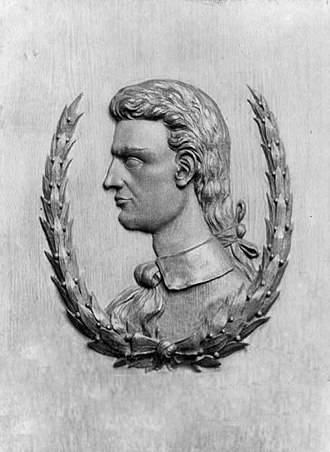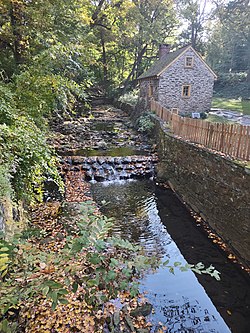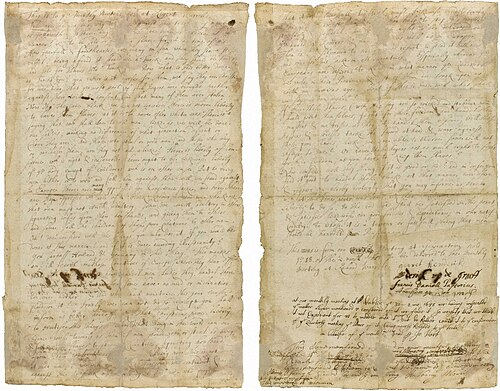
Germantown, located in the northwest part of modern-day Philadelphia, Pennsylvania, holds a significant place in American history as the first German settlement in the United States. Established in 1683, Germantown became a beacon for German immigrants seeking religious freedom and new opportunities in the New World. This article delves into the rich history of Germantown, highlighting its founding, development, and the notable figures who shaped its legacy. [1]
Research your ancestors on MyHeritage
Founding of GermantownFounding of Germantown
The Arrival of the First SettlersThe Arrival of the First Settlers

Germantown was founded on October 6, 1683, by thirteen Quaker and Mennonite families from Krefeld, Germany, led by Francis Daniel Pastorius. These settlers were part of a larger wave of German immigrants seeking to escape religious persecution and economic hardship in their homeland. The land for the settlement was purchased from William Penn, the proprietor of Pennsylvania, who was known for his policy of religious tolerance. [1]
Early DevelopmentEarly Development
Upon their arrival, the settlers began building homes and establishing farms. Germantown's layout was designed to resemble the villages they had left behind in Germany, with houses built close together along a main street. This design fostered a strong sense of community and mutual support among the settlers.
The early years were challenging, with settlers contending with harsh winters, limited resources, and the need to clear dense forests for agriculture. Despite these difficulties, Germantown thrived, becoming a model of successful colonial settlement.
Economic Growth and InnovationEconomic Growth and Innovation
Textile IndustryTextile Industry
One of Germantown's most significant contributions to American industry was its early involvement in textile manufacturing. The settlers brought with them skills in weaving and textile production, and by the early 18th century, Germantown had become a center for the production of woolen goods. The town's textile industry continued to grow, eventually playing a crucial role in the broader American economy.
Paper MakingPaper Making

Germantown was also home to the first paper mill in North America, established by William Rittenhouse. The paper produced at this mill was essential for the growing colonies, providing material for books, newspapers, and official documents. The Rittenhouse mill set the stage for future industrial developments in the region.[2]
- Establishment: In 1690, Rittenhouse, along with his partners, founded the first paper mill in British North America along the banks of the Monoshone Creek, also known as Paper Mill Run.
- Operations: The mill produced various types of paper, primarily for printing and business purposes. It played a crucial role in supplying paper to the growing colonies, which were increasingly in need of paper for printing books, newspapers, and official documents.
- Legacy: The Rittenhouse mill remained in operation for several generations, managed by Rittenhouse's descendants. It set the stage for the expansion of the paper industry in America.
Cultural and Social ContributionsCultural and Social Contributions
The Germantown ProtestThe Germantown Protest

In 1688, Germantown made history by producing the first written protest against slavery in America. This document, known as the Germantown Protest, was drafted by Francis Daniel Pastorius and signed by four Quaker men. The protest argued that slavery was incompatible with Christian values and called for an end to the practice. Although it did not lead to immediate change, the Germantown Protest is considered a foundational document in the American abolitionist movement.[3]
Education and LiteracyEducation and Literacy
Education was highly valued by the early settlers of Germantown. The town established one of the first public schools in Pennsylvania in 1701. This focus on education contributed to high literacy rates and the intellectual development of the community. Germantown's residents were known for their scholarly pursuits, with many contributing to the fields of literature, science, and philosophy.
Notable Figures in Germantown's HistoryNotable Figures in Germantown's History
Francis Daniel PastoriusFrancis Daniel Pastorius
Francis Daniel Pastorius, the leader of the original settlers, was a key figure in Germantown's early history. Born in Germany in 1651, Pastorius was a lawyer, educator, and writer. He played a crucial role in organizing the settlement and served as its first mayor. Pastorius was also an advocate for education and penned numerous works, including a comprehensive history of Germantown.[4]
David RittenhouseDavid Rittenhouse
David Rittenhouse, born in Germantown in 1732, was a prominent American astronomer, inventor, and mathematician. He was the grandson of William Rittenhouse, the founder of the first paper mill. David Rittenhouse made significant contributions to the scientific community, including the construction of advanced astronomical instruments and his work in surveying and engineering. He was also the first director of the United States Mint.[5]
Louisa May AlcottLouisa May Alcott
Louisa May Alcott, the famous author of "Little Women," spent part of her childhood in Germantown. Her family's time in the town influenced her literary work, and Germantown is often referenced in her writings. Alcott's experiences in Germantown provided her with a rich cultural and intellectual background that shaped her career as a writer.[6]
Germantown in the American RevolutionGermantown in the American Revolution
Germantown played a notable role during the American Revolution. In 1777, it was the site of the Battle of Germantown, where American forces under General George Washington attempted to surprise British troops occupying the town. Although the battle was a tactical defeat for the Americans, it demonstrated their resolve and boosted morale.
The town also served as a refuge for prominent figures during the war. The Chew House, also known as Cliveden, was occupied by British troops during the battle and became a focal point of the conflict. Today, Cliveden stands as a historic landmark, preserving the memory of Germantown's role in the fight for American independence. [7]
19th and 20th Century Developments19th and 20th Century Developments
Industrialization and GrowthIndustrialization and Growth
The 19th century brought significant changes to Germantown as it industrialized and expanded. The arrival of the railroad in the mid-1800s connected Germantown to Philadelphia and other markets, spurring economic growth. Factories and businesses flourished, and the town's population grew rapidly.
Preservation and Historic RecognitionPreservation and Historic Recognition
As Germantown modernized, efforts were made to preserve its rich history. In the late 19th and early 20th centuries, several historic buildings were restored, and organizations such as the Germantown Historical Society were established to protect the town's heritage. These efforts ensured that Germantown's unique history would be remembered and celebrated.
See alsoSee also
Explore more about GermantownExplore more about Germantown
- Researching your German ancestors webinar at Legacy Family Tree Webinars
- The voyages of our German Immigrants webinar
- From Krefeld to Germantown on NRW USA
- Historic Germantown on The Encyclopedia of Greater Philadelphia
- Germantown on Britannica
- The battle of Germantown on American Battlefield Trust
References
- ↑ 1.0 1.1 Founding of Germantown
- ↑ https://www.historyofinformation.com/detail.php?id=401
- ↑ https://philadelphiaencyclopedia.org/essays/historic-germantown-new-knowledge-in-a-very-old-neighborhood-2/
- ↑ https://www.bad-windsheim.de/stadt-mit-tradition/franz-daniel-pastorius
- ↑ https://archives.upenn.edu/exhibits/penn-people/biography/david-rittenhouse/
- ↑ https://www.ushistory.org/germantown/lower/pineplace.htm#google_vignette
- ↑ https://www.battlefields.org/learn/revolutionary-war/battles/germantown

